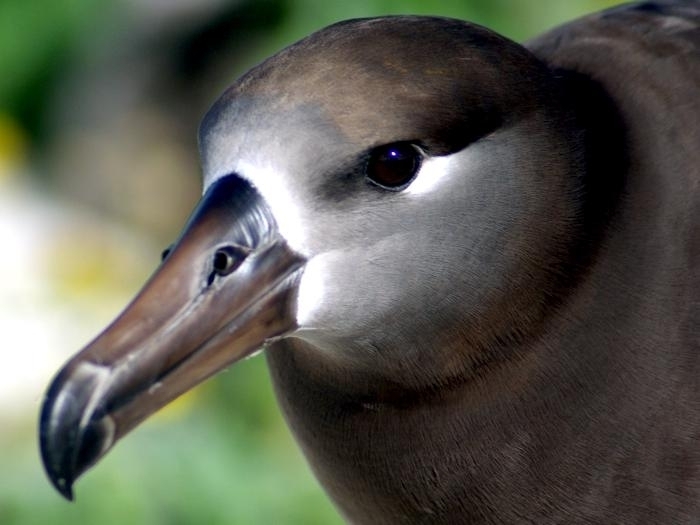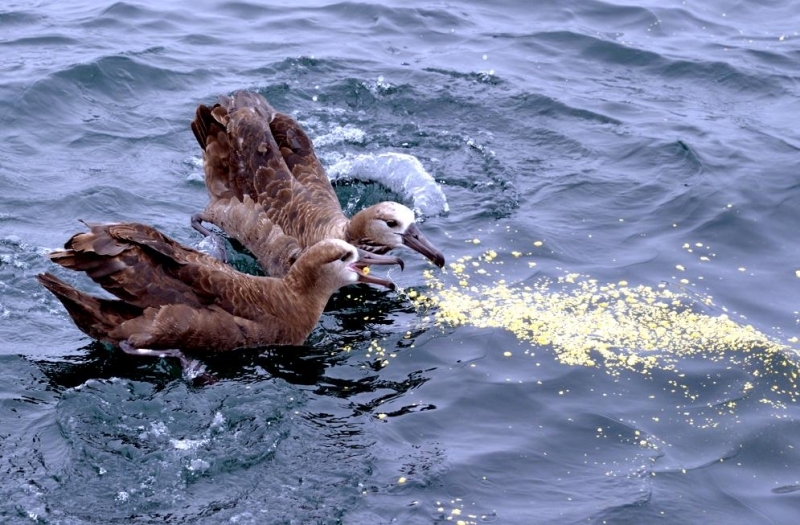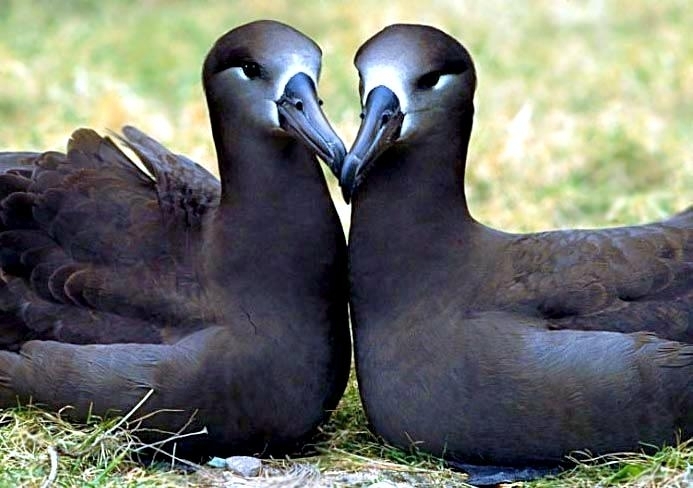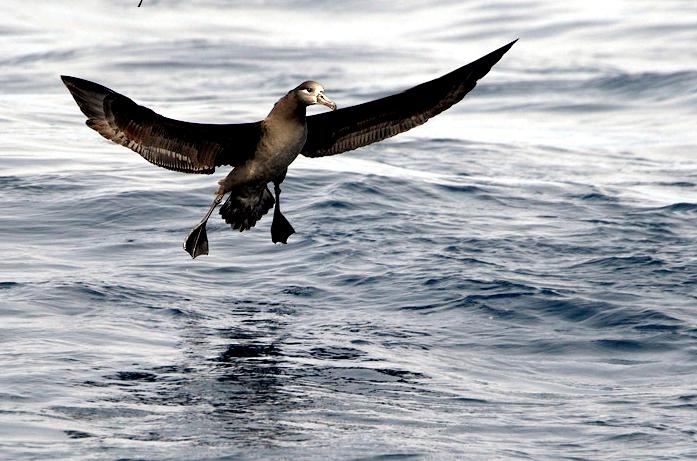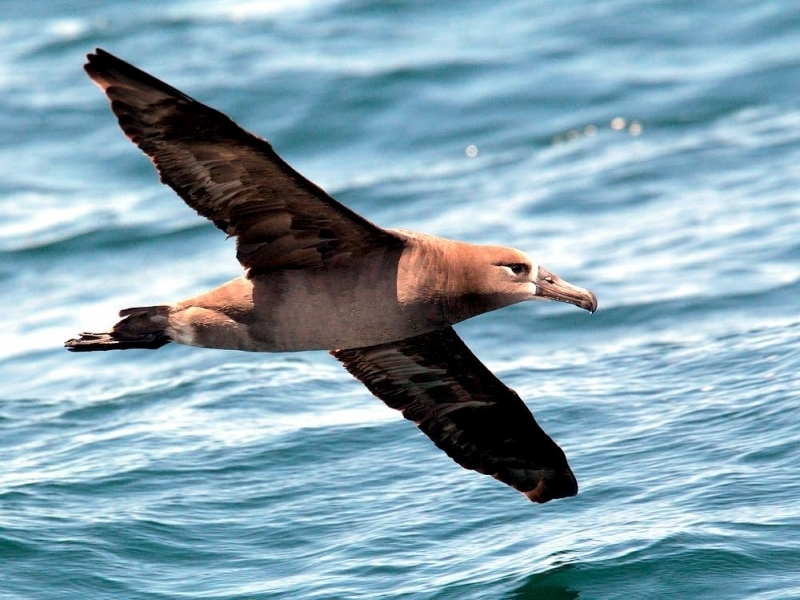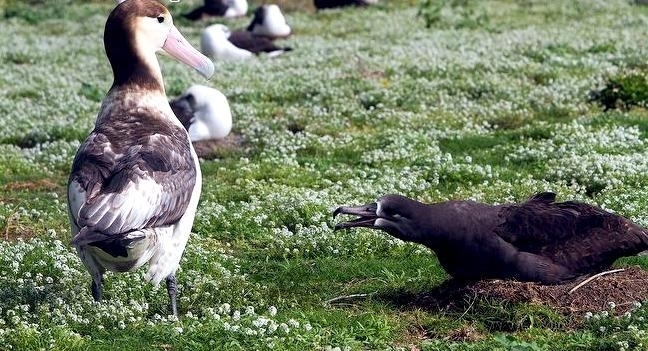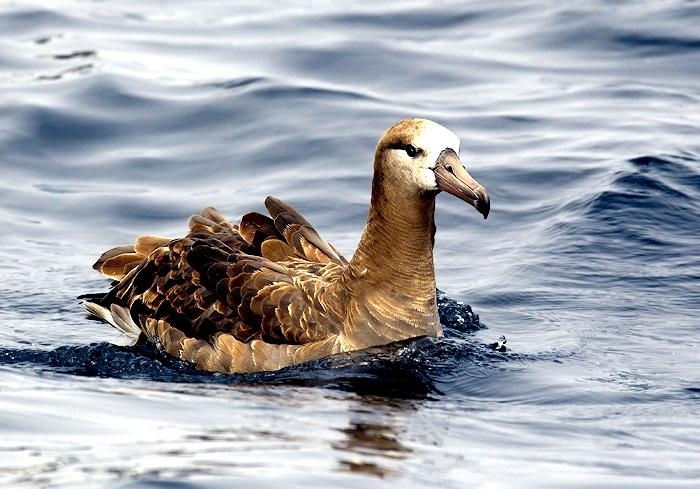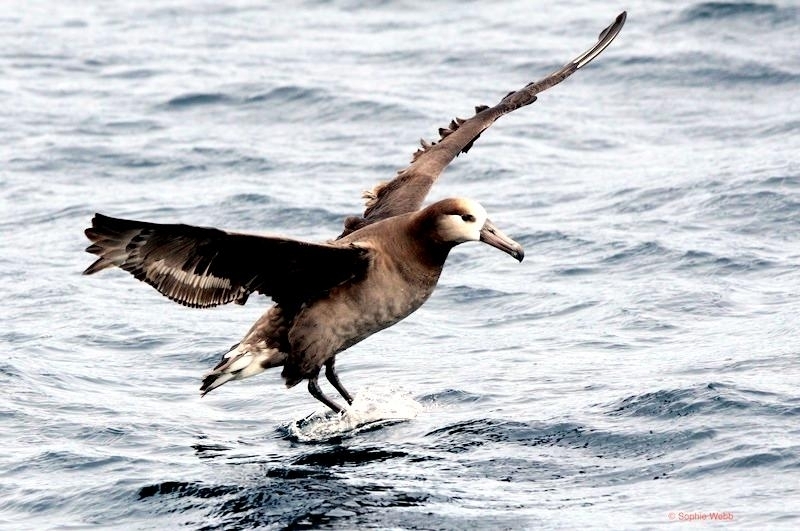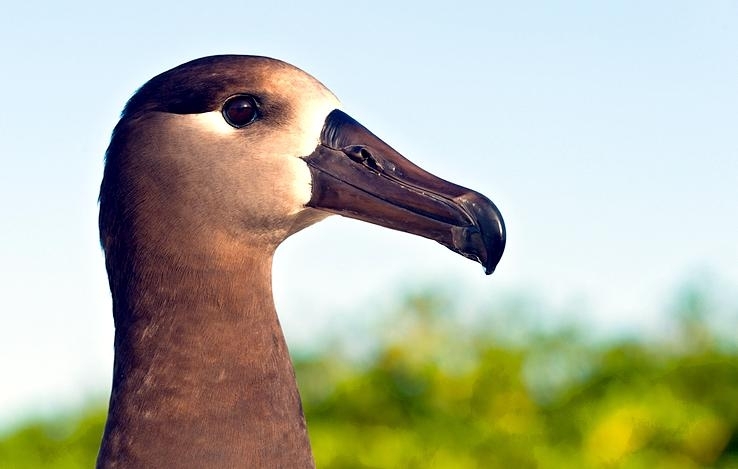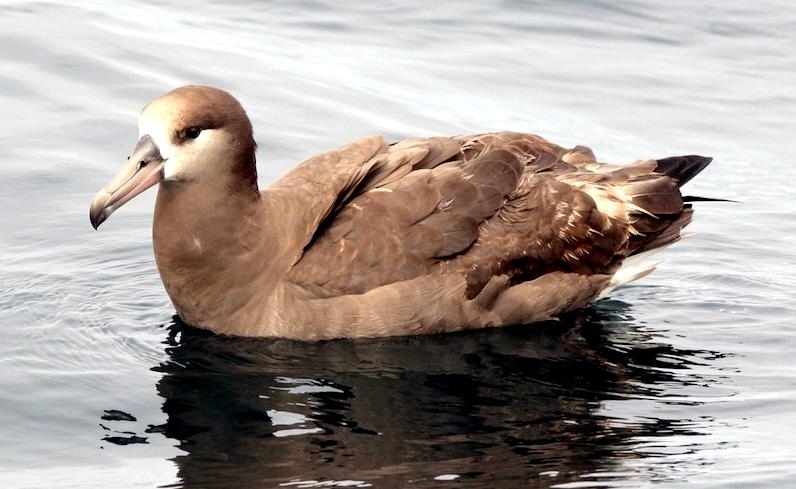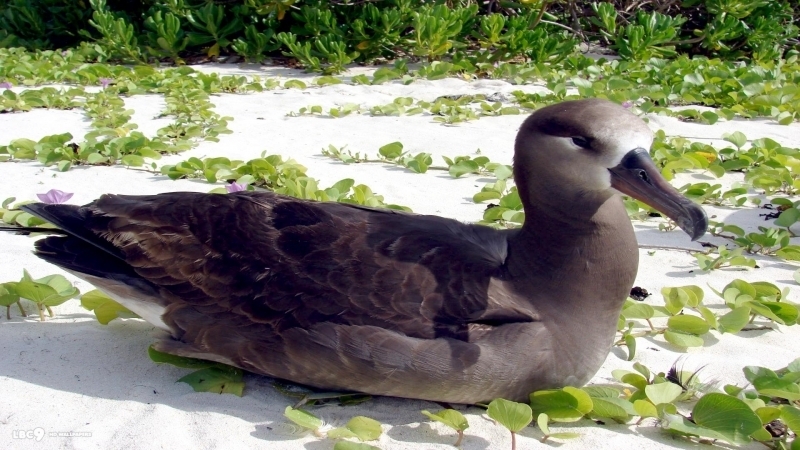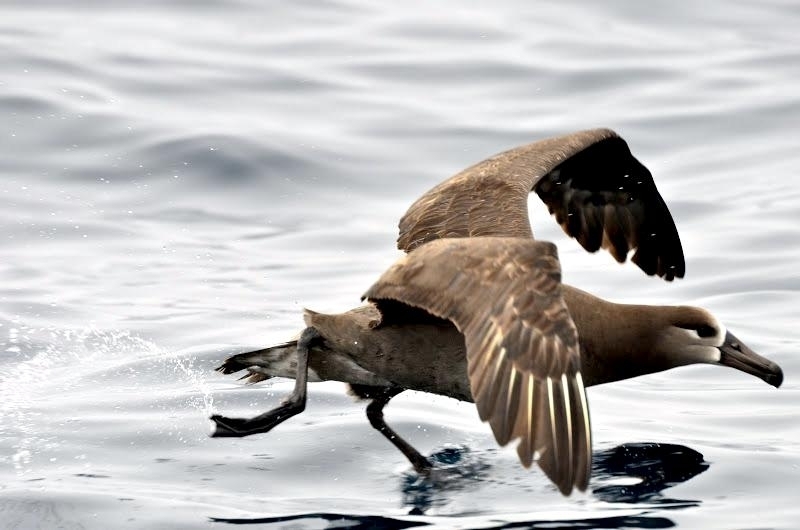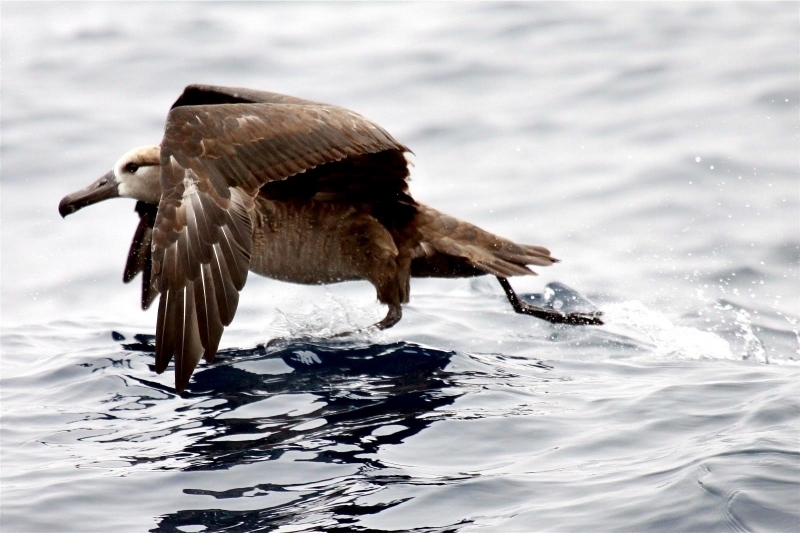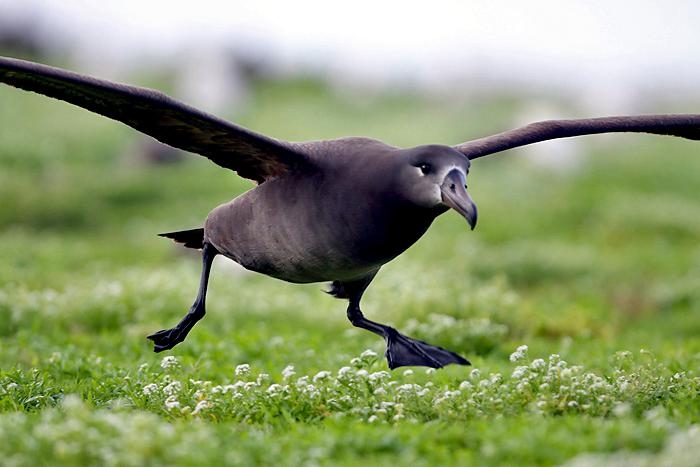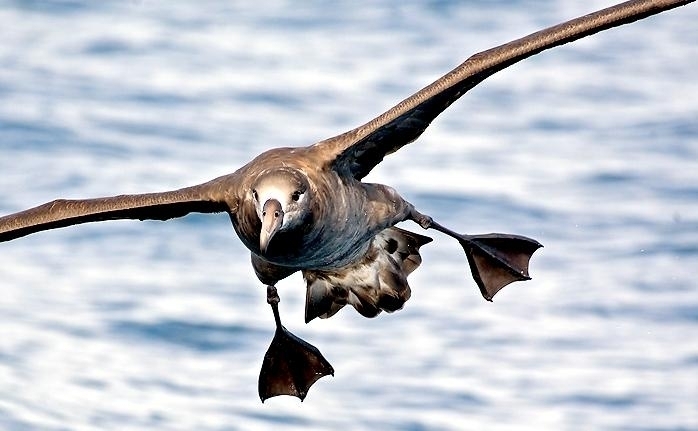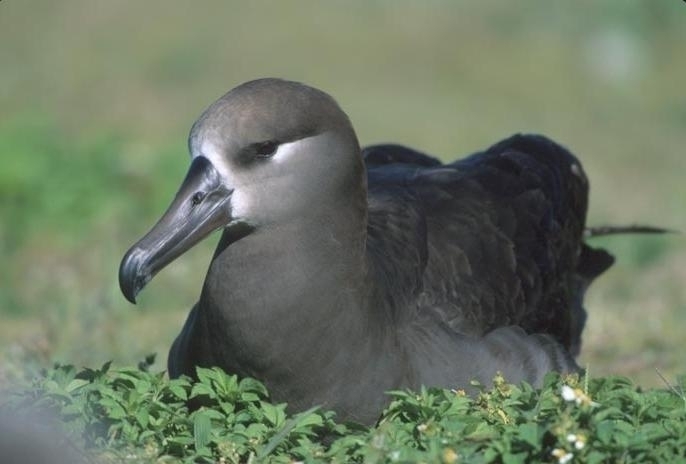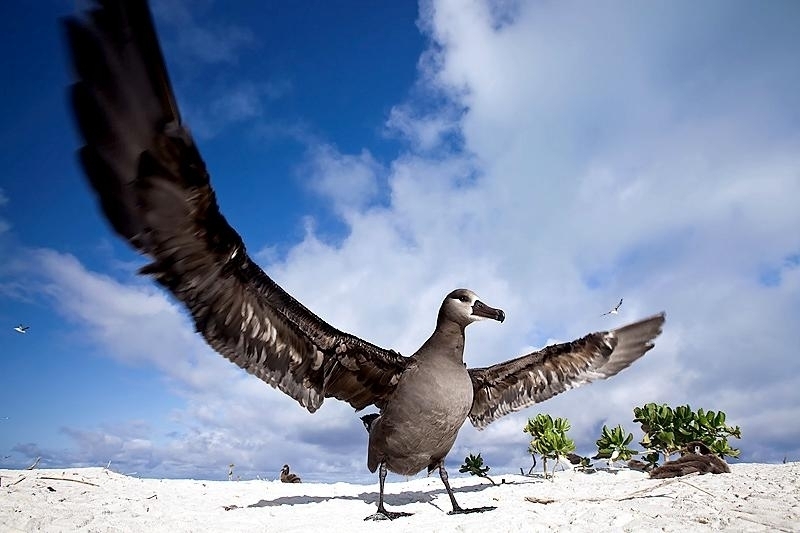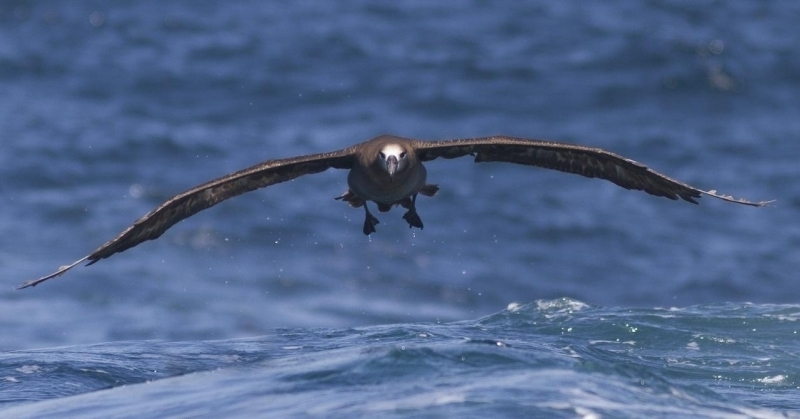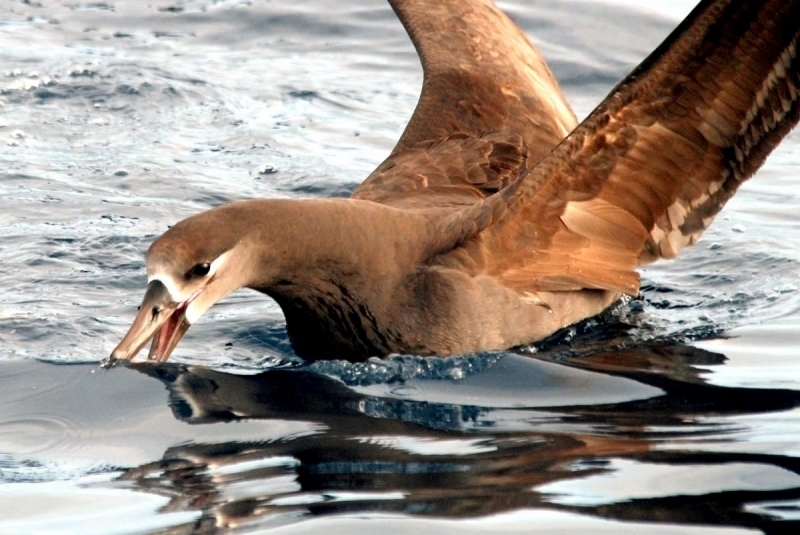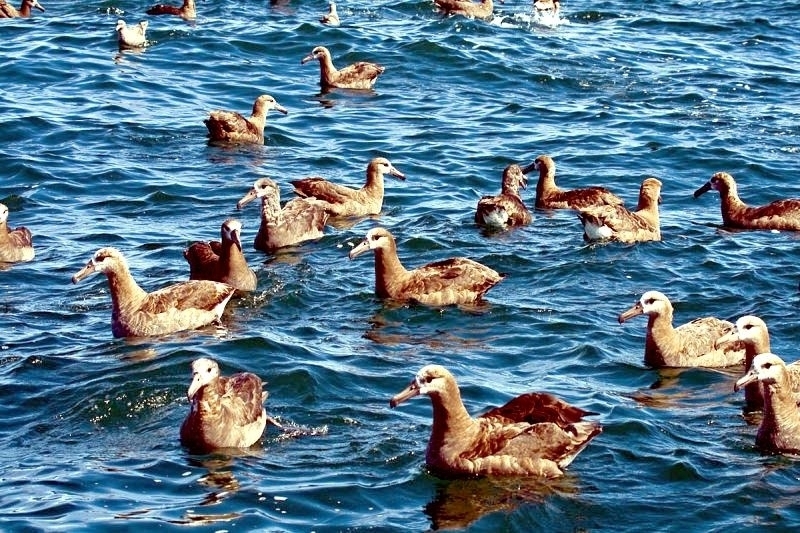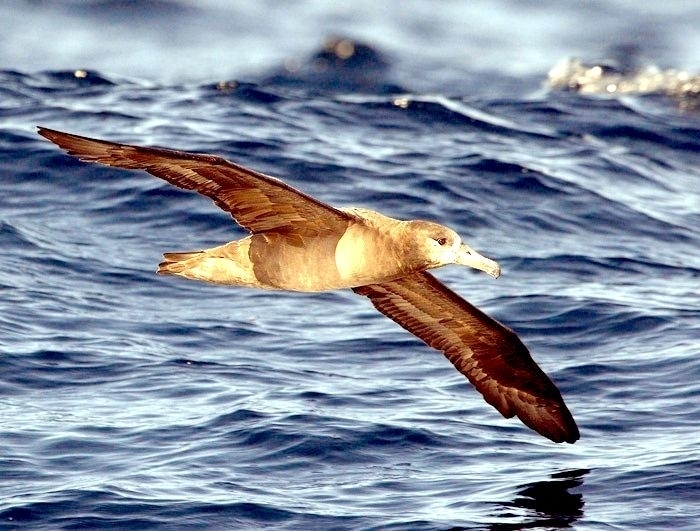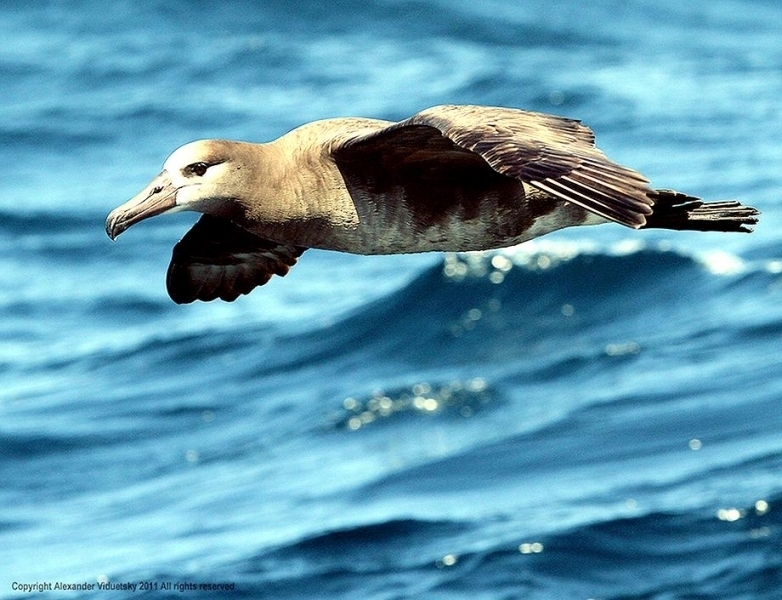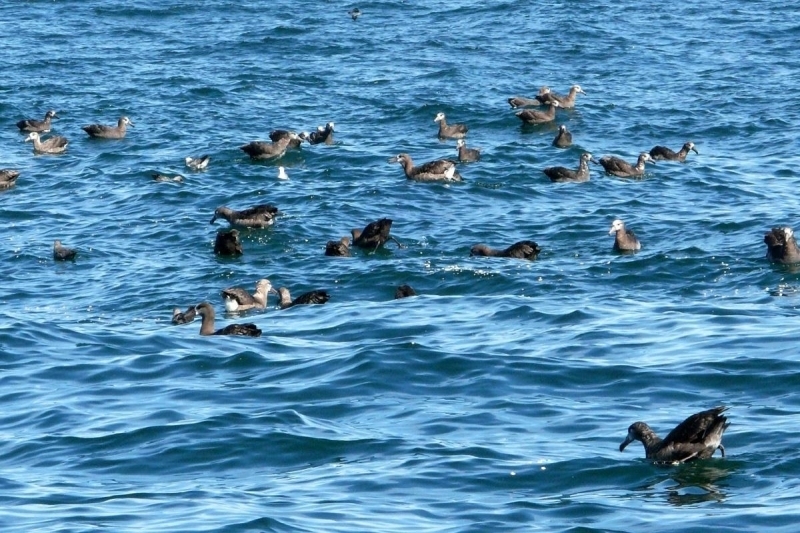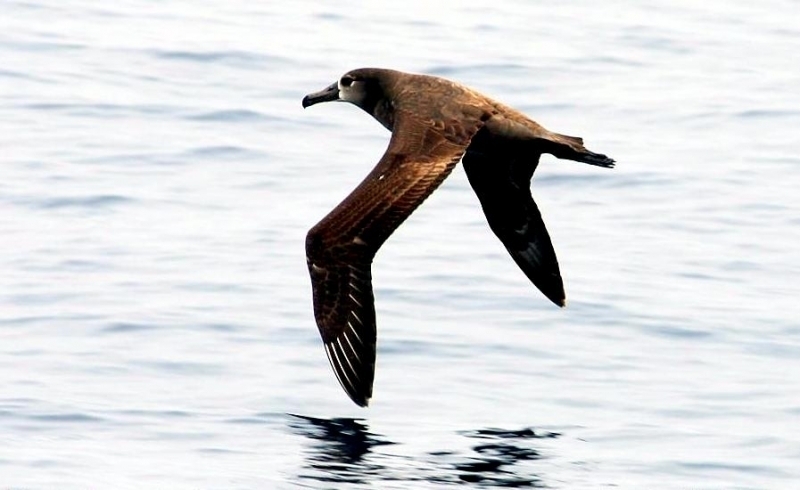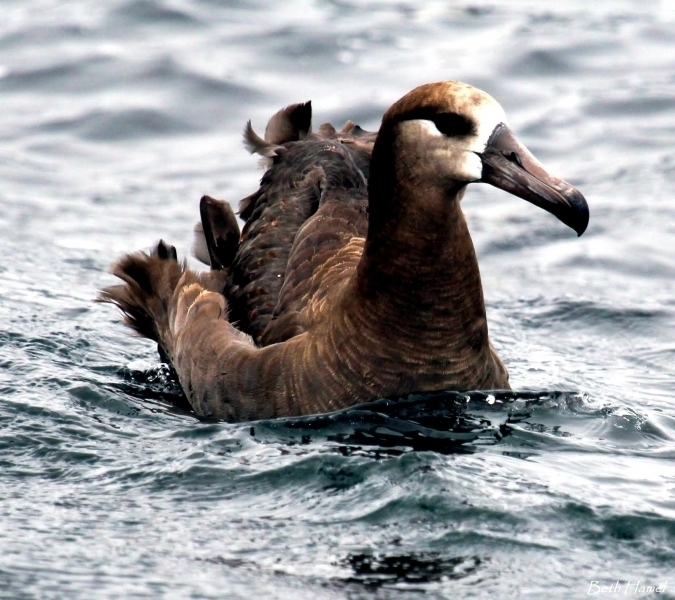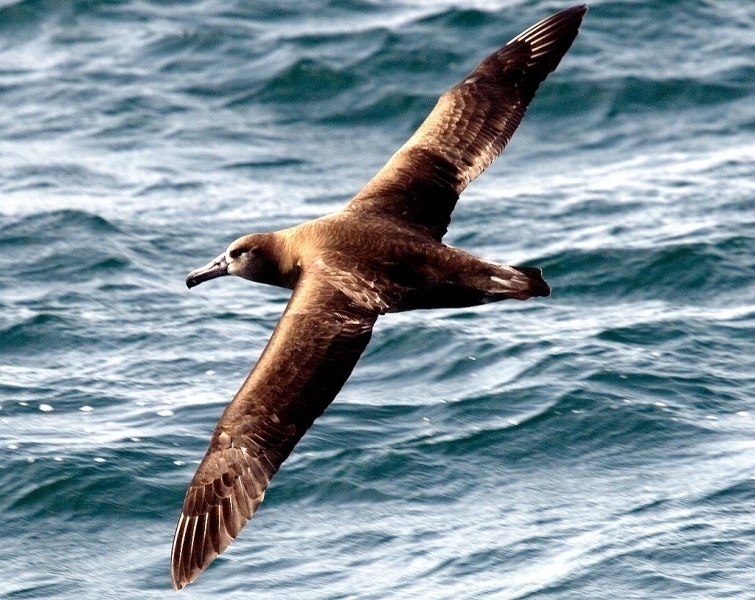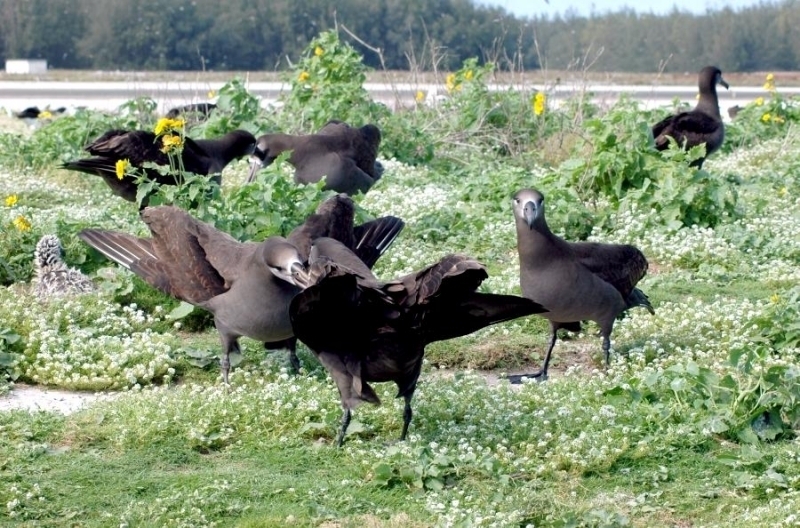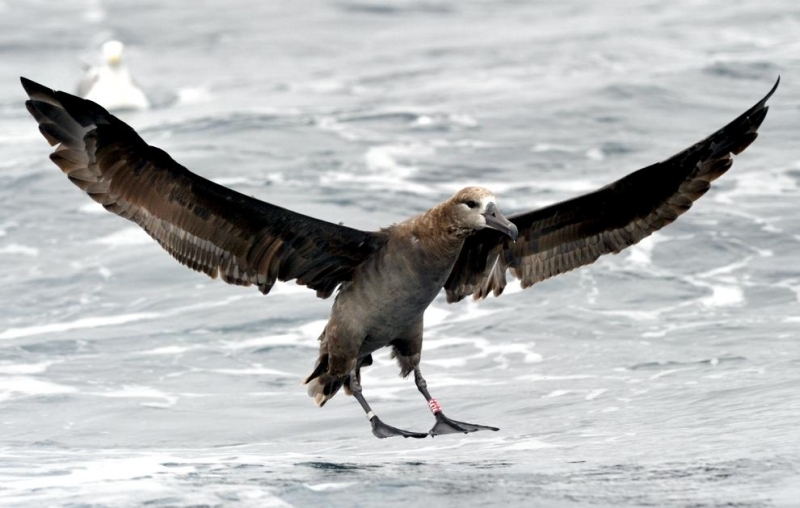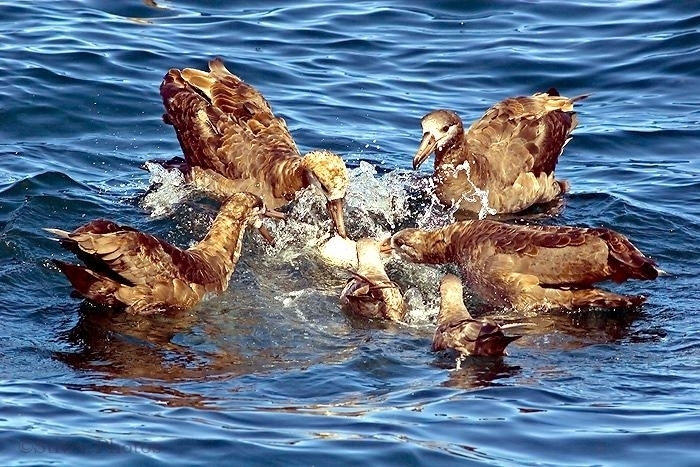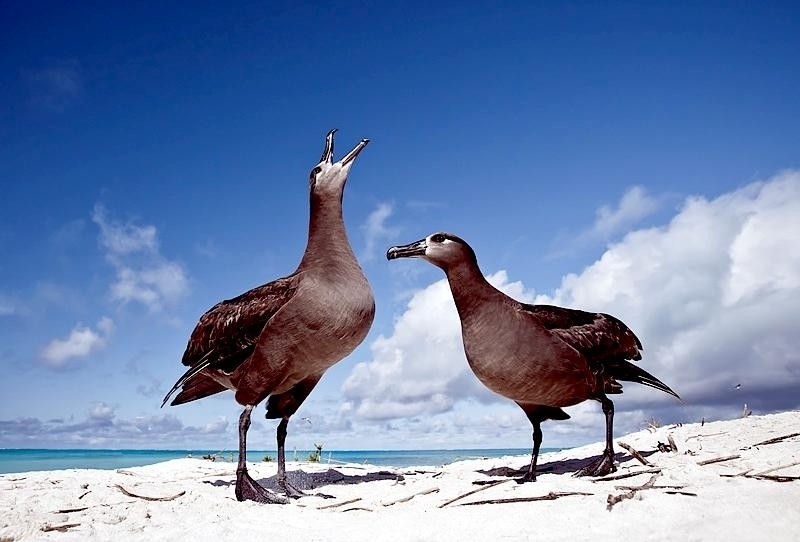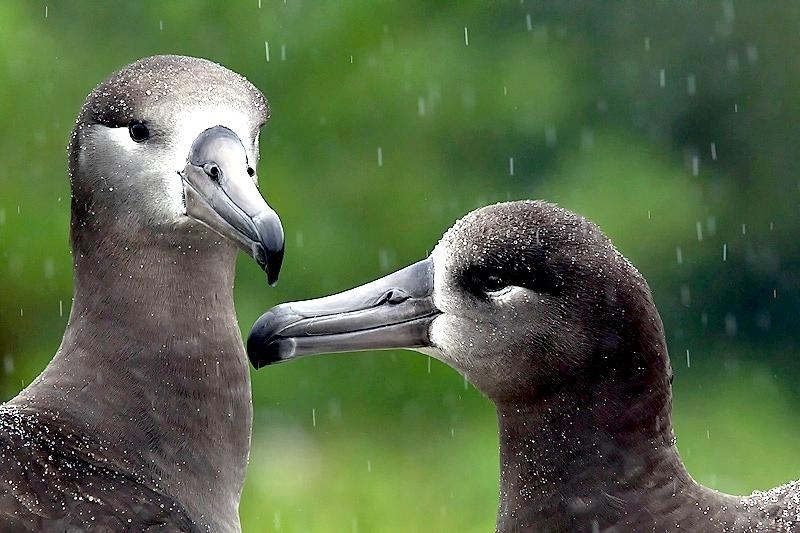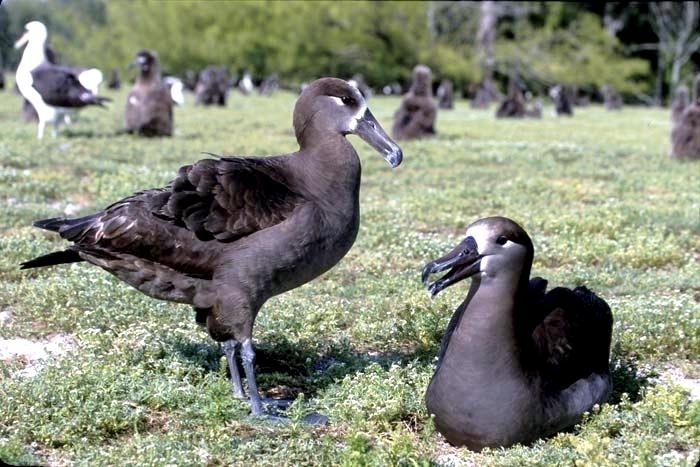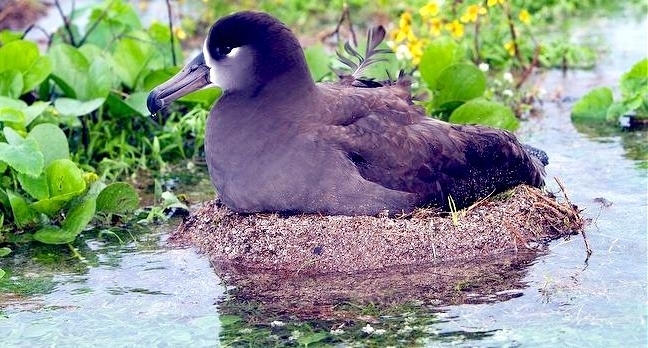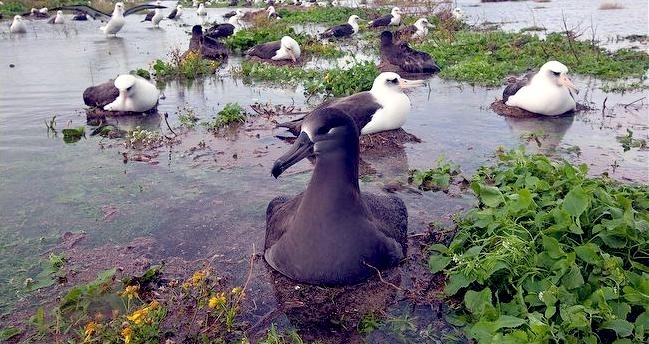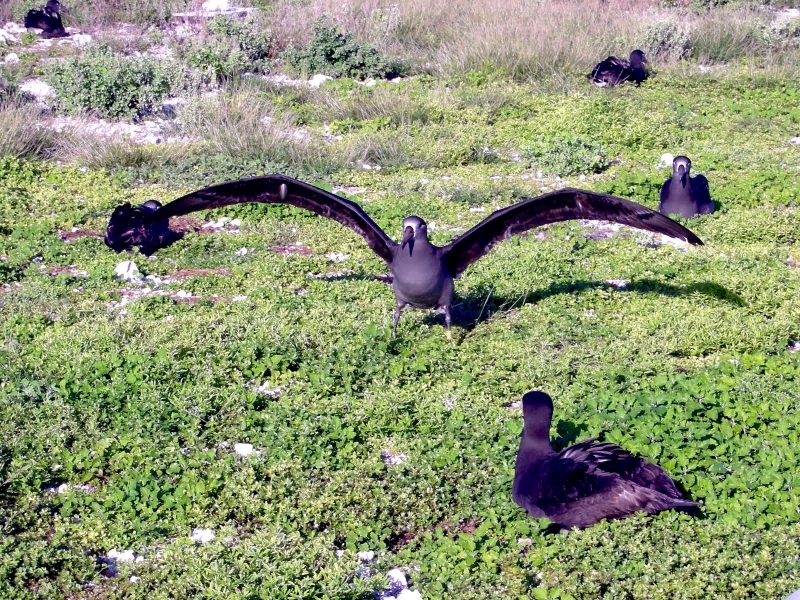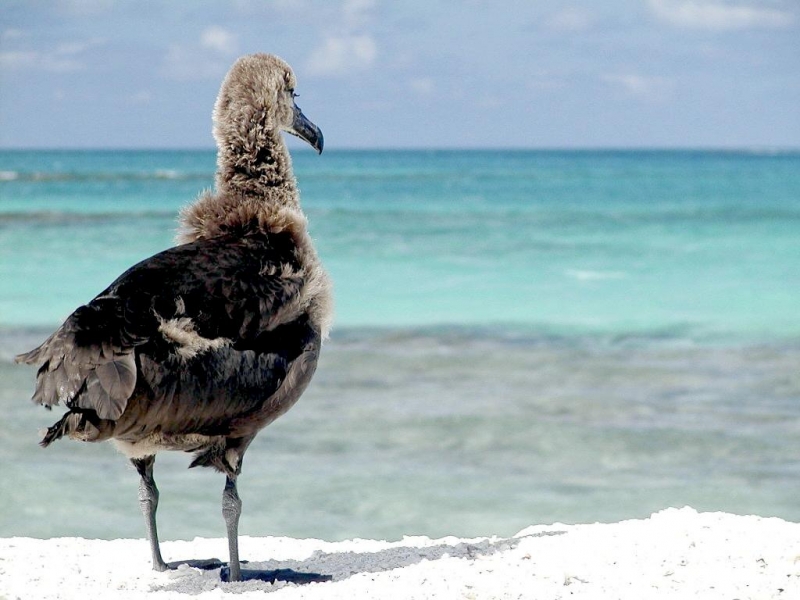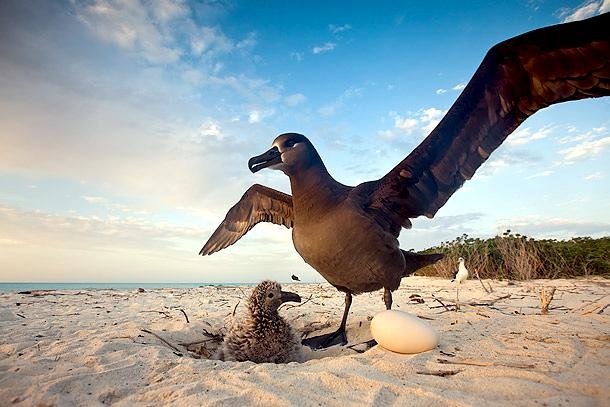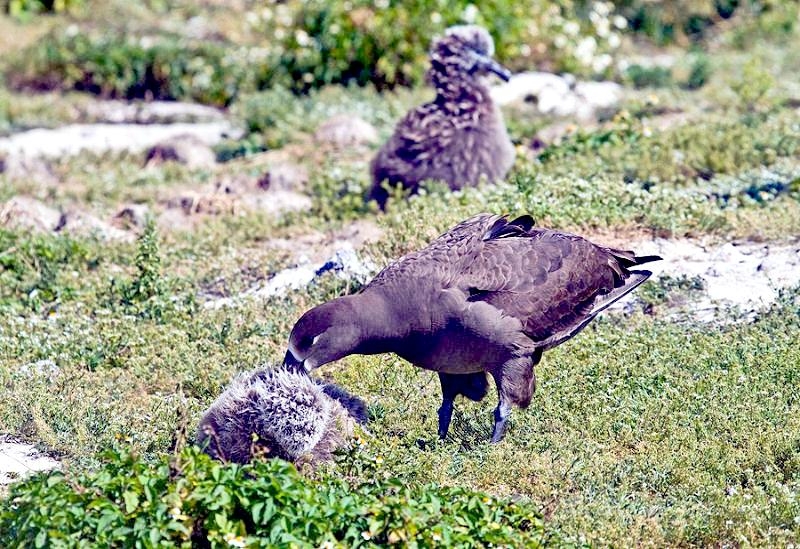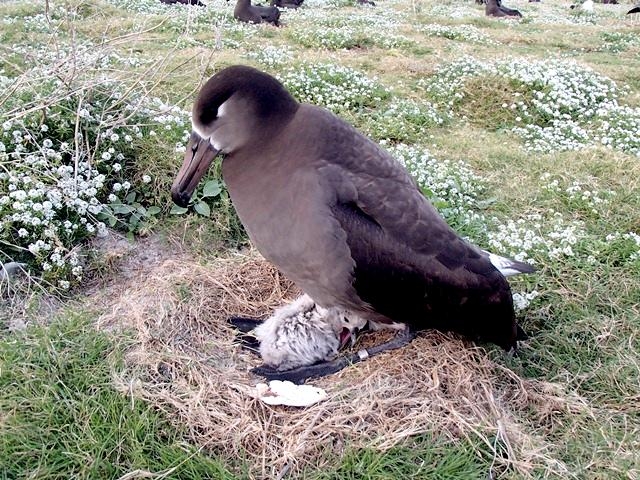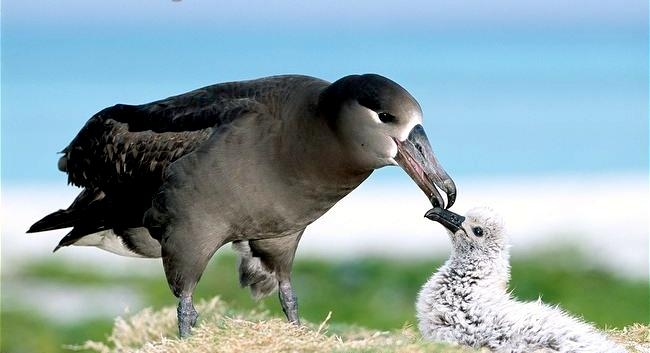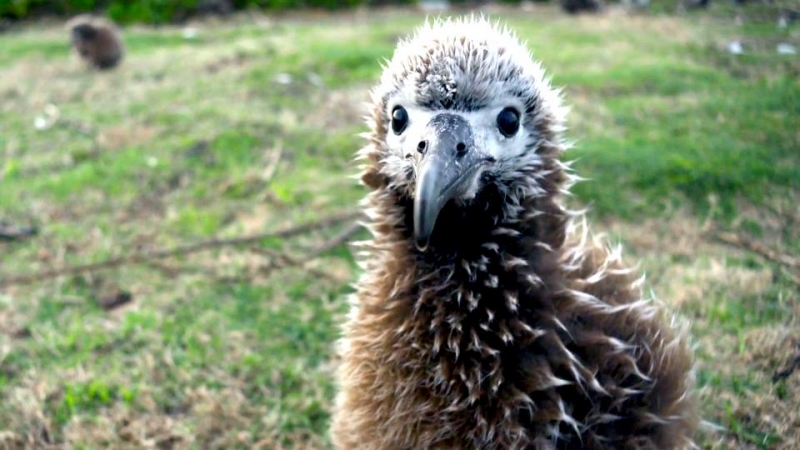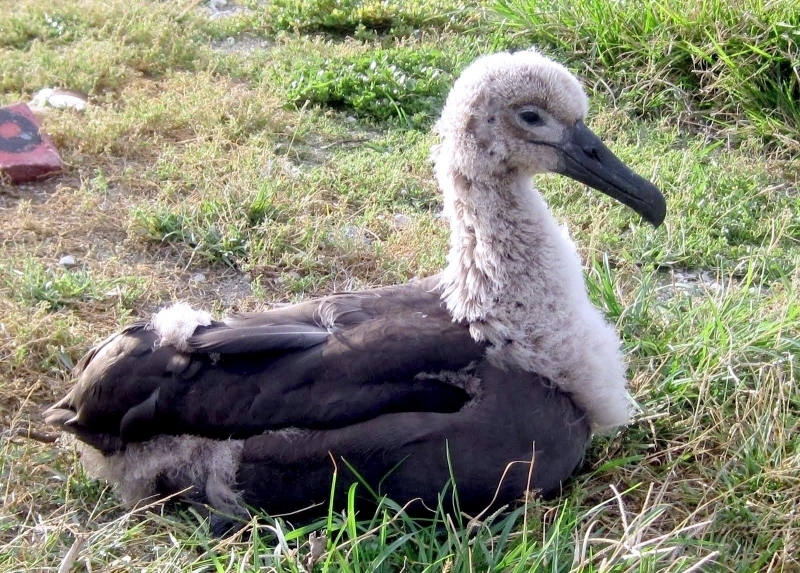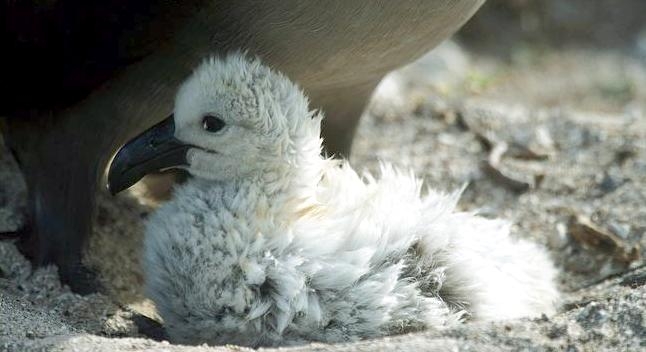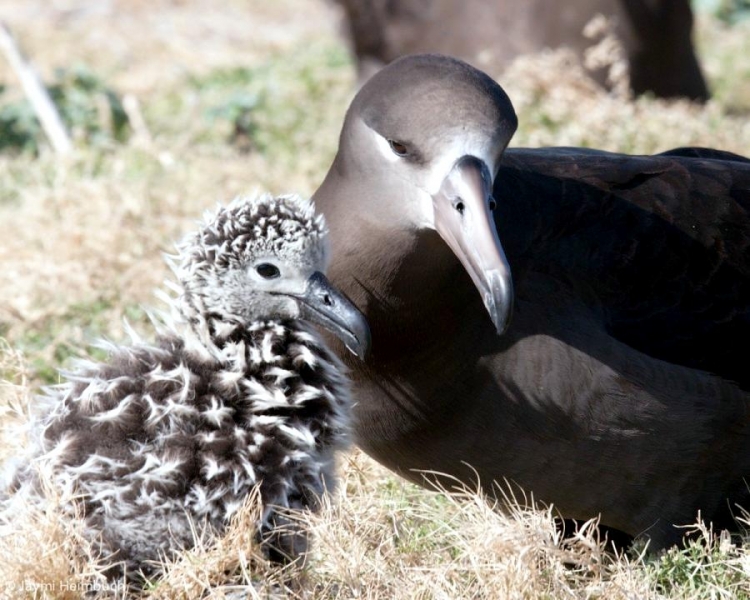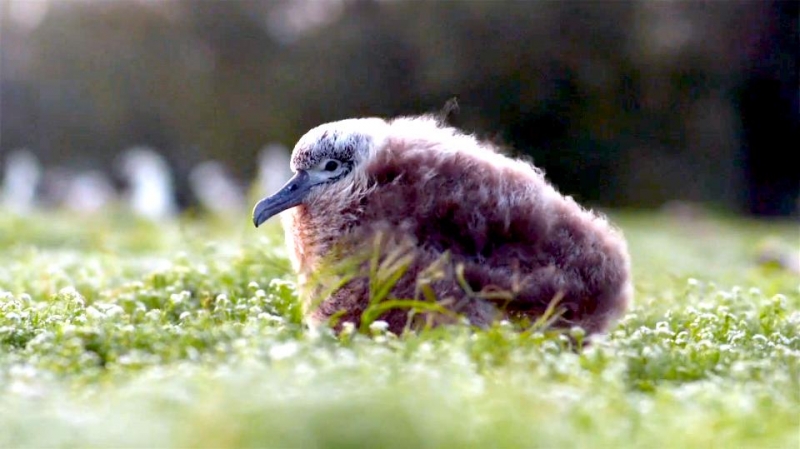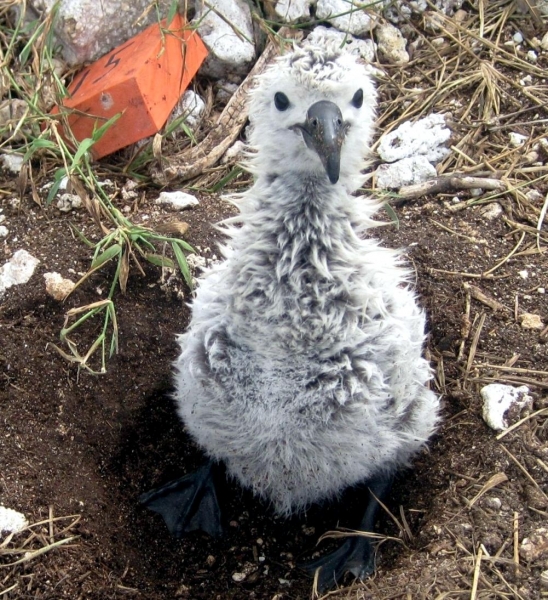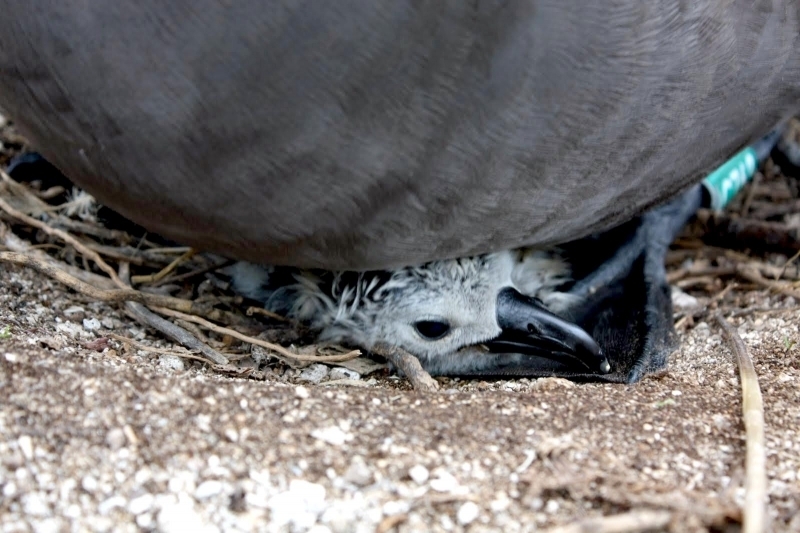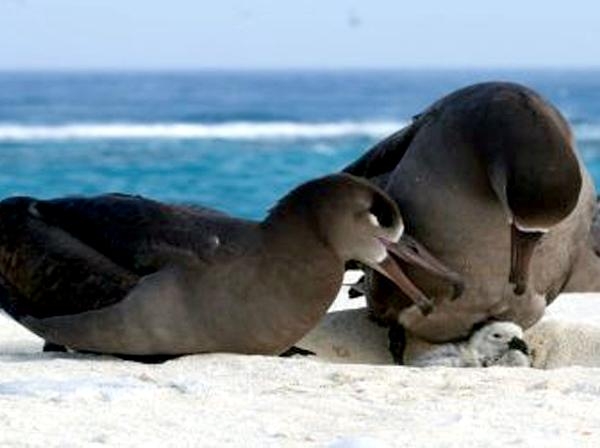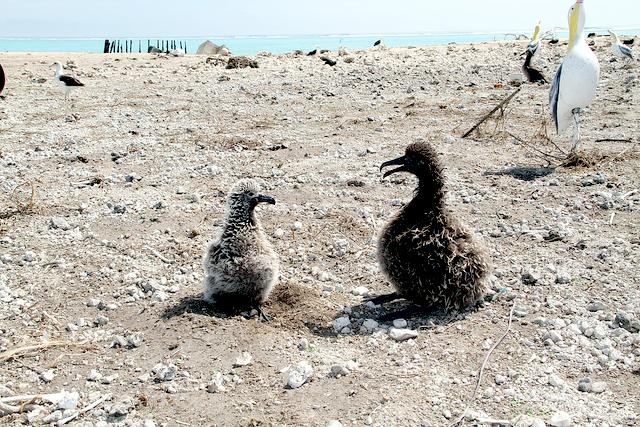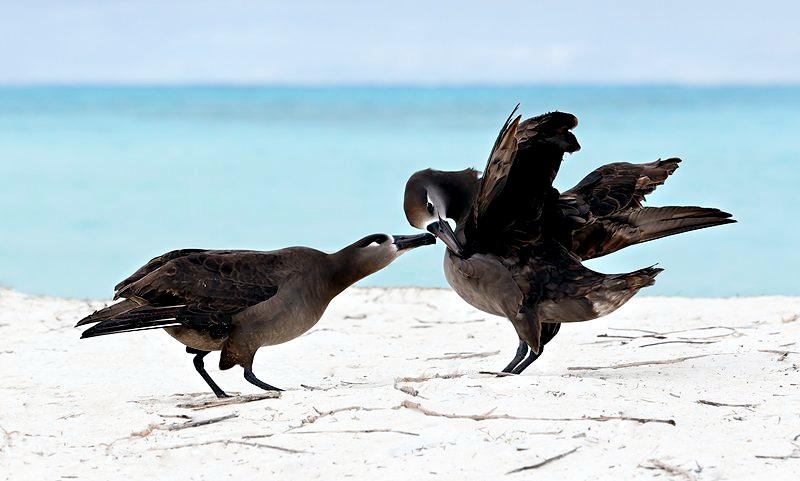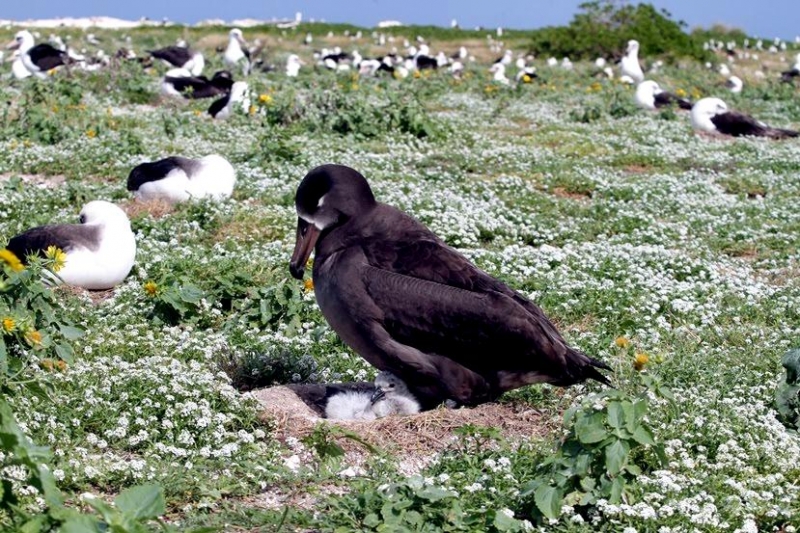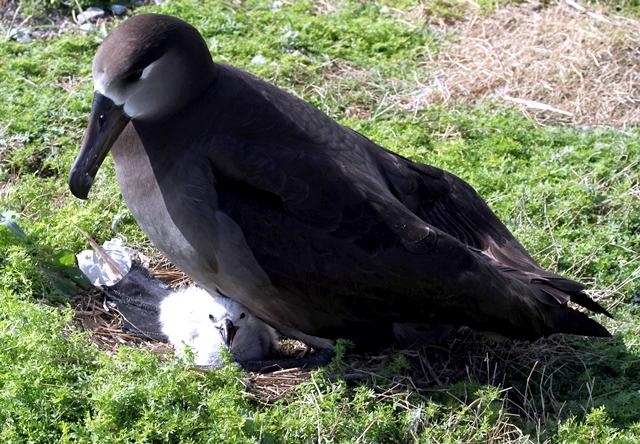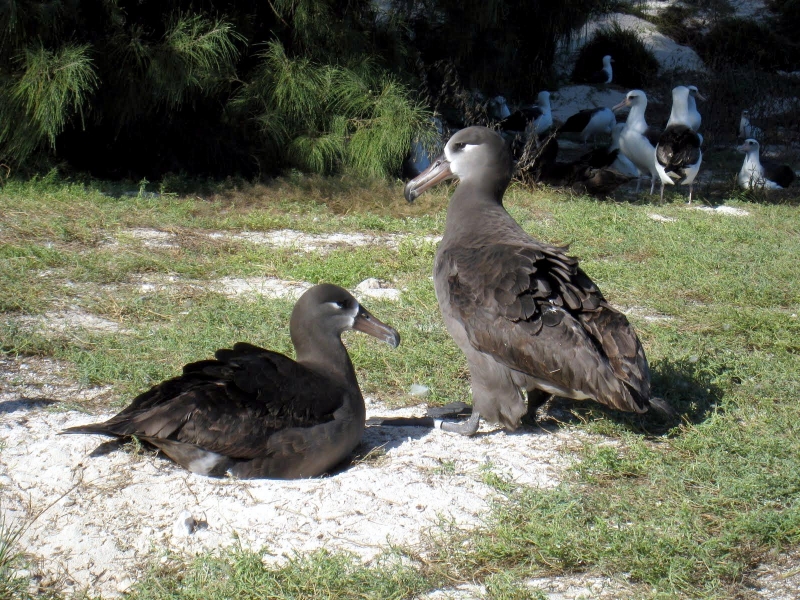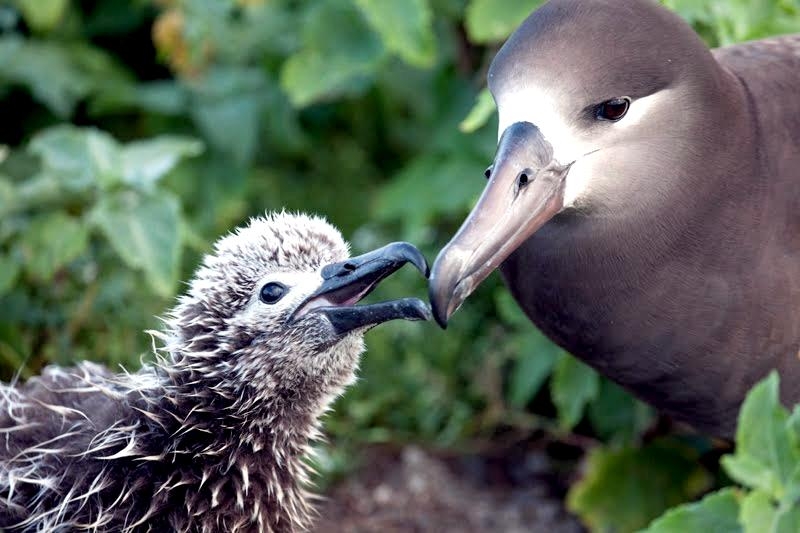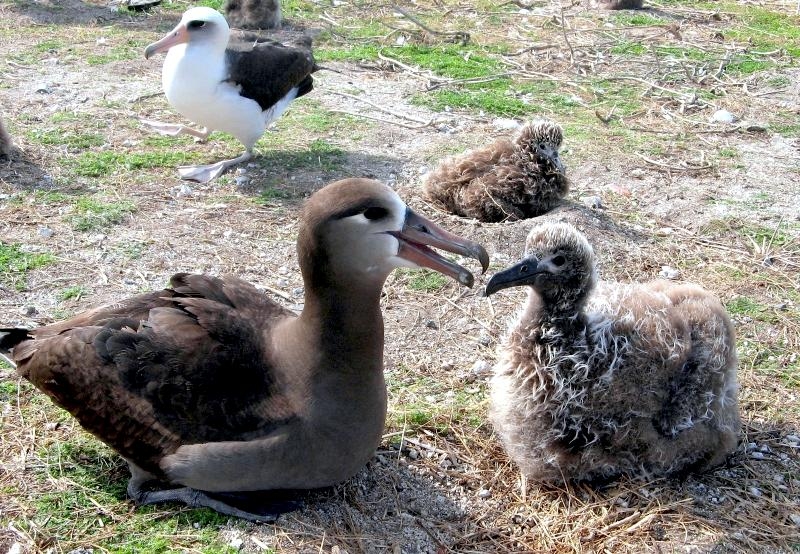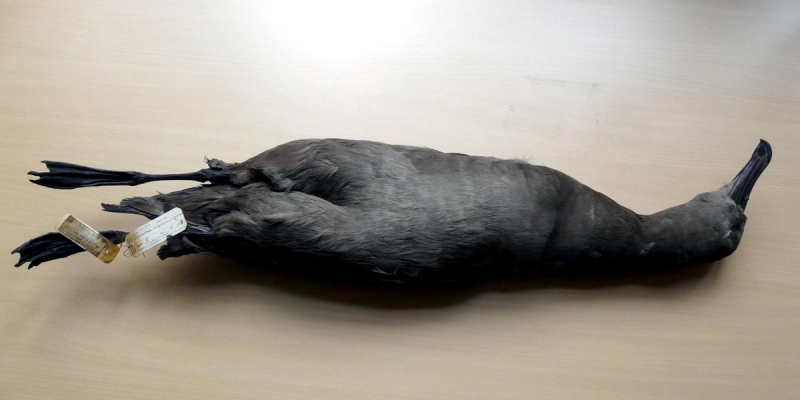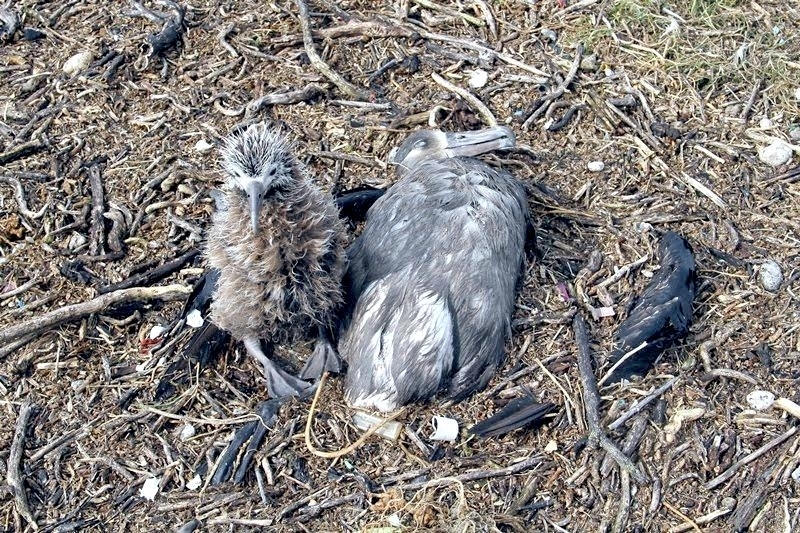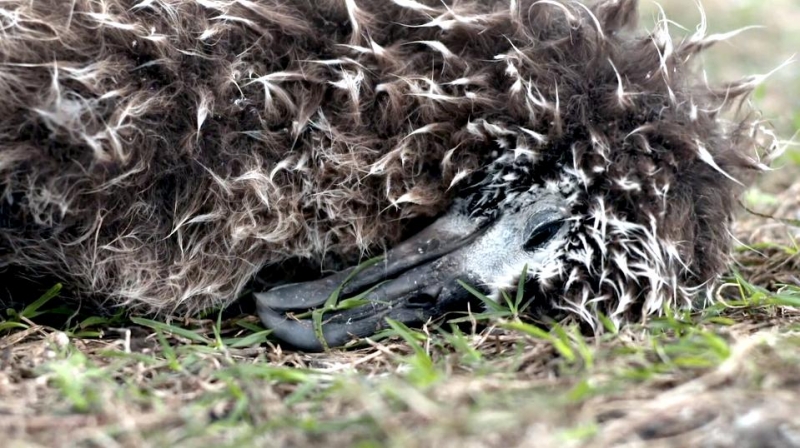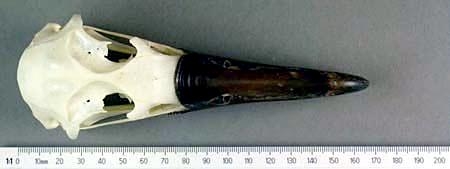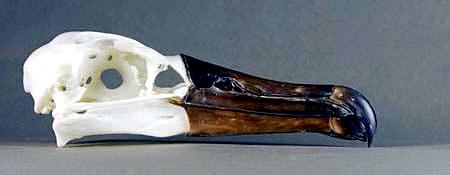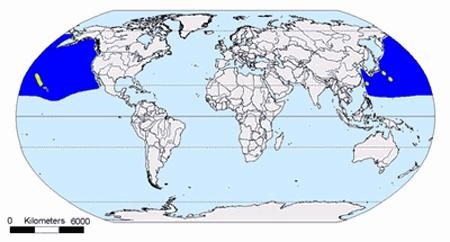“Phoebastria nigripes”
The formidable wingspan of the Black-footed Albatross, allows them to ride the wind currents above the ocean for hours at a time, without landing or even flapping their wings. The name albatross came from the Arabic word al-câdous or al-ġaţţās. This means “the diver” and later became English, also mixed with the Portuguese word alcatraz. This is also where the name of the prison Alcatraz comes from. The Black-footed Albatross has dark brown feathers (plumage) with a white area around the base of the bill. Its wings are long & narrow and it has a wingspan of about 1.9-2.2 meters (76-85 inches). The males are slightly larger and have a longer bill. They have a keen sense of smell and can find food far across the ocean. As the Black-footed Albatross nests in hot climates, it has developed ways of staying cool. The head of a Black-footed Albatross has a large network of blood vessels which dilate to keep it cool. Similar to school children everywhere, they deal with the hot, sandy beaches by hopping from one foot to the other. There is a valve in its nose which acts like a nose plug that stops water from passing into its airways when it dives in the ocean. They are clumsy in takeoff from land, running downhill with their wings outstretched into the wind. If the wind is not right, they may be stranded on the islands for a while. They also need a strong wind when taking off from the surface of the ocean. This seabird spends most of its life soaring & gliding in the sky or floating on the North Pacific Ocean, coming to land only to breed in large colonies on the Hawaiian Islands.
The Black-footed Albatross mates for life but if a mate dies, they will find another. Nests are made up of pieces of grass, sand & shrubs and are built in open spaces near beaches. On some islands, plants are taking over these open sandy spaces and reducing the nesting areas for the birds. The breeding pairs lay a single egg and the parents take turns incubating it for 9-10 weeks. During this time, they sometimes fast for 2-3 weeks at a time and during incubation drop one quarter of their body weight. After the chicks hatch in late January or early February, both parents will take turns feeding at sea and returning to feed the chick every week or so. Some of their breeding islands are infested with rats which eat the eggs & chicks. When the chick is approximately 4 months-old, they lose weight as they start to put more body energy into growing feathers & learning to fly. The Black-footed Albatross must be 5-7 years-old before breeding and they are at sea all that time. The Black-footed Albatross eats the eggs of the flying fish as well as squid. They sometimes follow ships, with the hope of getting a handout or finding garbage. As they are surface feeders, Black-footed Albatross are affected by marine plastic pollution, eating other things floating in the ocean such as plastic bottle caps, discarded cigarette lighters, six-pack plastic rings, rubber bands, balloons and plastic toys. Ocean currents collect this garbage in various places in the world’s oceans. One such place is north of the Hawaiian Islands, the middle of the feeding ground for the Black-footed Albatross. They fly as far as the west coast of California to feed and they feed during the day, as their eyesight is too poor to see at night. The Black-footed Albatross drinks sea water and gets rid of the extra salt through glands located above their eyes. They frequently are caught on the long-line hooks set out for catching Swordfish in Hawaii.
